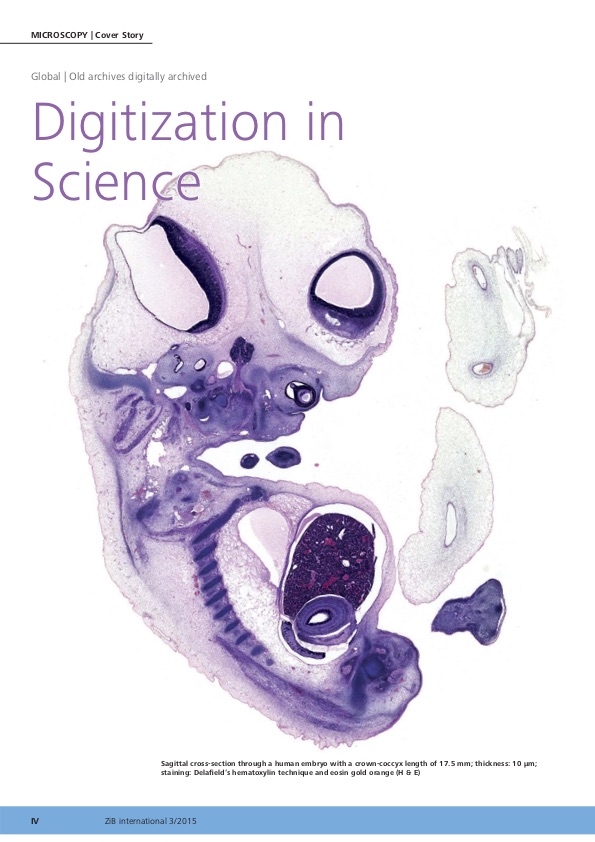Microscopy - Digitization in Science (2015)
| Embryology - 27 Apr 2024 |
|---|
| Google Translate - select your language from the list shown below (this will open a new external page) |
|
العربية | català | 中文 | 中國傳統的 | français | Deutsche | עִברִית | हिंदी | bahasa Indonesia | italiano | 日本語 | 한국어 | မြန်မာ | Pilipino | Polskie | português | ਪੰਜਾਬੀ ਦੇ | Română | русский | Español | Swahili | Svensk | ไทย | Türkçe | اردو | ייִדיש | Tiếng Việt These external translations are automated and may not be accurate. (More? About Translations) |
Introduction
Digitization is impacting every facet of our lives. Science is no different. Digitization is changing how we handle scientific knowledge. Generating and disseminating scientific knowledge is easier than ever. Digital storage and analytical instruments make it possible to quickly structure and analyze large, complex quantities of data and make them available to a broad audience.
Qualitative data collection has turned into quantitative data collection, making research results more reliable and more conclusive. Communication technologies are taking collaboration between research teams to a whole new level. Globally networked research projects are no longer the exception to the rule: they are now the norm. Digitization has changed the sciences from the ground up. The Microscopy business group was at the forefront of the evolution in digitization and has now developed a system for virtual microscopy.
- Links: Article PDF
Cite this page: Hill, M.A. (2024, April 27) Embryology Microscopy - Digitization in Science (2015). Retrieved from https://embryology.med.unsw.edu.au/embryology/index.php/Microscopy_-_Digitization_in_Science_(2015)
- © Dr Mark Hill 2024, UNSW Embryology ISBN: 978 0 7334 2609 4 - UNSW CRICOS Provider Code No. 00098G
